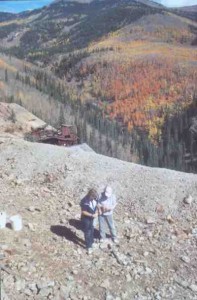Review by Virginia McConnell Simmons
History – July 2006 – Colorado Central Magazine
White Man’s Paper Trail: Grand Councils and Treaty-Making on the Central Plains
By Stan Hoig
Published in 2006 by University Press of Colorado
ISBN 0870819054
IN THIS EXCELLENT BOOK, Stan Hoig provides a “history of treaty-making efforts by the United States (and the Republic of Texas) with the native tribes that were active as prairie buffalo hunters and generally classed as Plains Indians.” This spare quotation from his preface belies the riches that serious students and general readers alike will find in the pages that follow.
Hoig’s conclusions concur with those held by most non-Indians and virtually all Native Americans today. He ascribes the faults in peace pacts, treaties, and post-1871 agreements to “political deception and dishonesty,” to “failure of both government officials and the general public to honorably fulfill solemn treaty obligations,” and to “the woeful effects of treaty-designated displacements and removal on Indian people.” Both flagrant malfeasance and innocent miscalculation took place, he asserts.
Beyond these widely accepted conclusions, then, what are the unique contributions of this volume? They lie in his lifetime of research, his concise descriptions of the treaties themselves, and his historical narrative about treaty-making from the Mississippi River westward, commencing soon after the Louisiana Purchase in 1803 and ending with the abrogation of the Sioux title to the Black Hills in 1877. Hoig leads the reader chronologically treaty by treaty, and includes rare and always fascinating information concerning the events leading up to negotiations, the councils, and their results.
Throughout the text, Hoig’s emphasis remains on the treaties and treaty-making, while he consequently minimizes details about well-known, related events such as the Battle of Beecher Island or Custer’s defeat at Little Bighorn. He assumes that readers already know about such well-known events or are sufficiently interested to become informed. An example is the Sand Creek Massacre in southeastern Colorado. Hoig focuses on the Treaty of Fort Wise, “one of the greatest land grabs of the West,” negotiated in 1861 when the Colorado gold rush and territorial interests were exploding, and then he continues this historical thread to the Sand Creek Massacre of 1864 but does not elaborate on the details of the massacre itself.
Hoig’s short treatment certainly doesn’t indicate that he is poorly informed on the subject — 45 years ago he wrote an entire book about this sordid affair — but his theme here is treaty-making. For complete historical coverage of this tragedy or of other engagements, look in other sources, including Stan Hoig’s Sand Creek Massacre (1961) and The Battle of the Washita (1976).
Hoig’s steadfast focus on his theme, however, results in the exclusion of a few valid topics which might illuminate his subject, such as the relationships of Plains tribes with other Native Americans like the Ute Indians and the synchronicity of treaty-making with them by the United States government.
IN ITS 245 PAGES, White Man’s Paper Trail includes 13 black-and-white illustrations, a comprehensive list of treaties organized by tribes, endnotes, an extensive bibliography, and an index. But it lacks maps, a regrettable omission because maps could have helped readers locate the 50-some forts that are mentioned in the text. It seems safe to assume that non-specialists might never have heard of a few of these places and may have only a vague notion about the locations of others. During my own reading, I had to turn repeatedly to the maps in my copy of Soldier and Brave. But how many readers would happen to have a volume on their bookshelves about sites associated with Indian affairs and Indian wars?
And, of course, at least one typographical error of significant consequence must occur in every book to haunt the author and publisher. In this case, the date of Colorado’s gold rush is switched from 1859 to 1849.
Although this volume is not the first publication about the appalling story of broken treaties, White Man’s Paper Trail will be a welcome addition because it offers new information concisely and objectively in one readily accessible volume. Other commendable publications for students interested in this subject include several authored or co-authored by the late Vine Deloria, Jr., notably the two-volume Documents of American Indian Diplomacy, Treaties, Agreements, and Conventions, 1775-1979 and also Tribes, Treaties, and Constitutional Tribulation. A compendium edited by Charles J. Kappler, Indian Treaties, has also been a standard reference work.
With his new publication, Stan Hoig proves once again that he is a master of his subject matter. Readers will feel confident that they are in the competent hands of a reliable scholar who avoids pedantry and polemics and who writes with a clear, eminently readable style. He has authored about two dozen other acclaimed books, dealing chiefly with events or personages related to Native American history on the Central Plains. He presently is retired as professor emeritus at the University of Central Oklahoma.
–Virginia McConnell Simmons
Author of The Ute Indians of Utah, Colorado, and New Mexico.


